A Methodology to Systematically Investigate the Diffusion Degradation of Cemented Carbide during Machining of a Titanium Alloy
Abstract
:1. Introduction
2. Experimental
2.1. Materials
2.2. Turning Tests
- Test series I: cutting speed vc: 30 m/min, feed rate fn: 0.2 mm/rev, cutting depth ap: 3.0 mm.
- Test series II: cutting speed vc: 90 m/min, feed rate fn: 0.2 mm/rev, cutting depth ap: 3.0 mm.
2.3. Post-Test Evaluation
2.3.1. Sample Preparation
2.3.2. Characterization of Worn Tool Surfaces and Back-Side of Chips
3. Results
3.1. SEM and EDS Analysis of Worn Inserts
3.2. SEM and EDS Analysis of Wet Etched Worn Inserts
3.3. SEM and EDS Analysis of Polished Cross-Sections
3.4. AES Depth Profiling within the Crater on Worn Insert
3.5. AES Depth Profiling within the Crater on a Wet Etched Insert
3.6. AES Line Scan Analysis of Polished Cross-Sections
3.7. Surface Analysis of Back-Side of Chips
4. Discussion
5. Conclusions
- The results show that the characterization of wet etched worn inserts give quick and useful information regarding the diffusion degradation of cemented carbide, in the present work the formation of a fine crystalline W layer (carbon depleted WC layer) at the tool–chip interface.
- AES-depth profiling of degradation layers gives detailed information of the layer thickness and the formation of secondary phases; in the present study TiC is formed as revealed by the shift in the carbon-signal.
- In contrast, characterization of as-tested worn inserts is more complicated, since the worn tool regions are generally covered by adhered work material. AES-depth profiling through these layers may give some complementary information, but large analyzed areas and thick adhered layers should be avoided to obtain well defined depth profiles.
- AES-line scan analysis of cross sections is an interesting valuable approach which may also give complementary information.
- Surface characterization of the back-side of the produced chips will increase the understanding regarding the actual tool wear process, i.e., the removal of wear fragments from the cemented carbide insert. In the present study, fine W particles were found on the back-side of the chip.
Author Contributions
Funding
Acknowledgments
Conflicts of Interest
References
- García, J.; Ciprés, V.C.; Blomqvist, A.; Kaplan, B. Cemented carbide microstructures: A review. Int. J. Refract. Met. Hard Mater. 2018, 80, 40–68. [Google Scholar] [CrossRef]
- Trent, E.M.; Wright, P.K. Metal Cutting, 4th ed.; Butterworth-Heinemann: Oxford, UK, 2000; ISBN 0-7506-7069-X. [Google Scholar]
- Childs, T.H.C.; Maekawa, K.; Obikawa, T.; Yamane, Y. Metal Machining–Theory and Applications; Elsevier: Oxford, UK, 2000; ISBN 0-340-69159-X. [Google Scholar]
- Su, Y.; He, N.; Li, L.; Li, X.L. An experimental investigation of effects of cooling/lubrication conditions on tool wear in high-speed end milling of Ti-6Al-4V. Wear 2006, 261, 760–766. [Google Scholar] [CrossRef]
- Jawaid, A.; Che-Haron, C.H.; Abdulla, A. Tool wear characteristics in turning of titanium alloy Ti-6246. J. Mater. Process. Technol. 1999, 92, 329–334. [Google Scholar] [CrossRef]
- Satyanarayana, K.; Venu, G.A.; Bangaru, B.P. Taguchi Analysis on Cutting Forces and Temperature in Turning Titanium Ti-6Al-4V. Int. J. Mech. Ind. Eng. 2012, 1, 55–59. [Google Scholar]
- Arrazola, P.J.; Garay, A.; Iriarte, L.M.; Armendiaa, M.; Maryab, S.; Maitrec, F.L. Machinability of titanium alloys (Ti6Al4V and Ti555.3). J. Mater. Process. Technol. 2009, 209, 2223–2230. [Google Scholar] [CrossRef] [Green Version]
- Pramanik, A. Problems and solutions in the machining of Ti-alloys. Int. J. Adv. Manuf. Technol. 2014, 70, 919–928. [Google Scholar] [CrossRef]
- Davim, J.P. Machining of Titanium Alloys; Springer: Berlin, Germany, 2014; ISBN 978-3-662-43901-2. [Google Scholar]
- Ribeiro, M.V.; Moreira, M.R.V.; Ferreira, J.R. Optimization of titanium alloy (6Al-4V) machining. J. Mater. Process. Technol. 2003, 143, 458–463. [Google Scholar] [CrossRef]
- Ezugwu, E.O.; Bonney, J.; Yamane, Y. An overview of the machinability of aero engine alloys. J. Mater. Process. Technol. 2003, 134, 233–253. [Google Scholar] [CrossRef]
- Veiga, C.; Davim, J.P.; Loureiro, A.J.R. Review on machinability titanium alloys: The process perspective. Rev. Adv. Mater. Sci. 2013, 34, 148–164. [Google Scholar]
- Armendia, M.; Garay, A.; Iriarte, L.M.; Arrazola, P.J. Comparison between the machiabilities of Ti6Al4V and TIMETAL 54M using uncoated WC-Co tools. J. Mater. Process. Technol. 2010, 210, 197–203. [Google Scholar] [CrossRef]
- Oliaei, S.N.B.; Karpat, Y. Investigating the influence of built-up edge on forces and surface roughness in micro scale orthogonal machining of titanium alloy Ti6Al4V. J. Mater. Process. Technol. 2016, 235, 28–40. [Google Scholar] [CrossRef] [Green Version]
- Ramirez, C.; Ismail, A.I.; Gendarme, C.; Dehmas, M.; Gautier, E.A.; Poulachon, G.; Rossi, F. Understanding the diffusion wear mechanisms of WC-10%Co carbide tools during dry machining of titanium alloys. Wear 2017, 390, 61–70. [Google Scholar] [CrossRef]
- Olander, P.; Heinrichs, J. Initiation and propagation of tool wear in turning of titanium alloys–Evaluated in successive sliding wear test. Wear 2019, 426, 1658–1666. [Google Scholar] [CrossRef]
- Hartung, P.D.; Kamer, B.M. Tool wear in Titanium Machining. CIRP Ann. Manuf. Technol. 1982, 31, 75–80. [Google Scholar] [CrossRef]
- Min, W.; Youzhen, Z. Diffusion wear in milling titanium alloys. Mater. Sci. Technol. 1988, 4, 548–553. [Google Scholar] [CrossRef]
- Ikuta, A.; Shinozaki, K.; Masuda, H.; Yamane, Y.; Kuroki, H.; Fukaya, Y. Consideration of the adhesion mechanism of Ti alloys using cemented carbide tool during the cutting process. J. Mater. Process. Technol. 2002, 127, 251–255. [Google Scholar] [CrossRef]
- Nouari, M.; Makich, H. Experimental investigation on the effect of the material microstructure on tool wear when machining hard titanium alloys: Ti-6Al-4V and Ti-555. Int. J. Refract. Met. Hard Mater. 2013, 41, 259–269. [Google Scholar] [CrossRef]
- Jawaid, A.; Sharif, S.; Koksal, S. Evaluation of wear mechanisms of coated carbide tools when face milling titanium alloy. J. Mater. Process. Technol. 2000, 99, 266–274. [Google Scholar] [CrossRef]
- Jianxin, D.; Yousheng, L.; Wenlong, S. Diffusion wear in dry cutting of Ti-6Al-4V with WC/Co carbide tools. Wear 2008, 265, 1776–1783. [Google Scholar] [CrossRef]
- Zhang, S.; Li, J.F.; Deng, J.X.; Li, Y.S. Investigation on diffusion wear during high speed machining Ti-6Al-4V alloy with straight tungsten carbide tools. Int. J. Adv. Manuf. Technol. 2009, 44, 17–25. [Google Scholar] [CrossRef]
- Liang, L.; Liu, X.; Li, X.Q.; Li, Y.Y. Wear mechanisms of WC-10Ni3Al carbide tool in dry turning of Ti6Al4V. Int. J. Refract. Met. Hard Mater. 2015, 48, 272–285. [Google Scholar] [CrossRef]
- Rahman, R.A.; Rashid, S.; Palanisamy, S.; Sun, M.; Dargusch, S. Tool wear mechanisms involved in crater formation on uncoated carbide tool when machining Ti6Al4V alloy. Int. J. Adv. Manuf. Technol. 2016, 83, 1457–1465. [Google Scholar] [CrossRef]
- Odelros, S.; Kaplan, B.; Kritikos, M.; Johansson, M.; Norgren, S. Experimental and theoretical study of the microscopic crater wear mechanism in titanium machining. Wear 2017, 376, 115–124. [Google Scholar] [CrossRef]
- Kaplan, B.; Odelros, S.; Kritikos, M.; Bejjani, R.; Norgren, S. Study of tool wear and chemical interaction during machining of Ti6Al4V. Int. J. Refract. Met. Hard Mater. 2018, 72, 253–256. [Google Scholar] [CrossRef]
- Latteman, M.; Coronel, E.; Garcia, J.; Sadik, I. Interaction between cemented carbide and Ti6Al4V alloy in cryogenic machining. In Proceedings of the 19th Plansee Seminar, Reutte, Austria, 29 May–2 June 2017. [Google Scholar]
- Edin, E.; Luo, W.; Ahuja, R.; Kaplan, B.; Blomqvist, A. First principles study of C diffusion in WC/W interfaces observed in WC/Co tools after Ti-alloy machining. Comput. Mater. Sci. 2019, 161, 236–243. [Google Scholar] [CrossRef]
- Wear and wear mechanisms of cemented carbide in the turning of Ti6Al4V. 2019; in press.
- Dearnley, P.A.; Grearson, A.N. Evaluation of principal wear mechanisms of cemented carbides and ceramics used for machining titanium alloy IMI318. Mater. Sci. Technol. 1986, 2, 47–58. [Google Scholar] [CrossRef]
- Smetyukhova, T.N.; Druzhinin, A.V.; Podgorny, D.A. Features of the Auger spectra of Ti2C, SiC and WC, Journal of surface investigation: X-ray. Synchrotron Neutron Tech. 2017, 11, 414–419. [Google Scholar] [CrossRef]
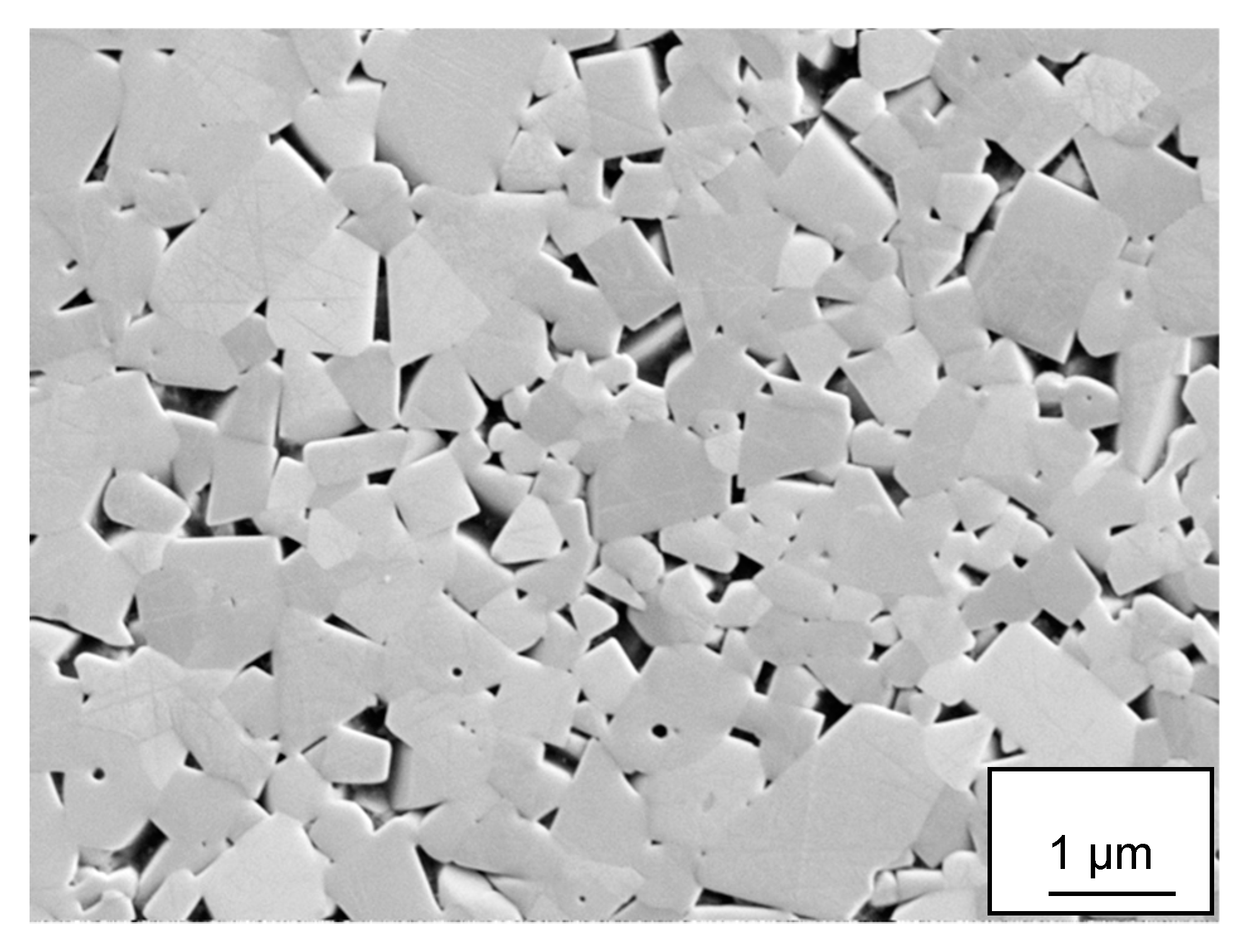
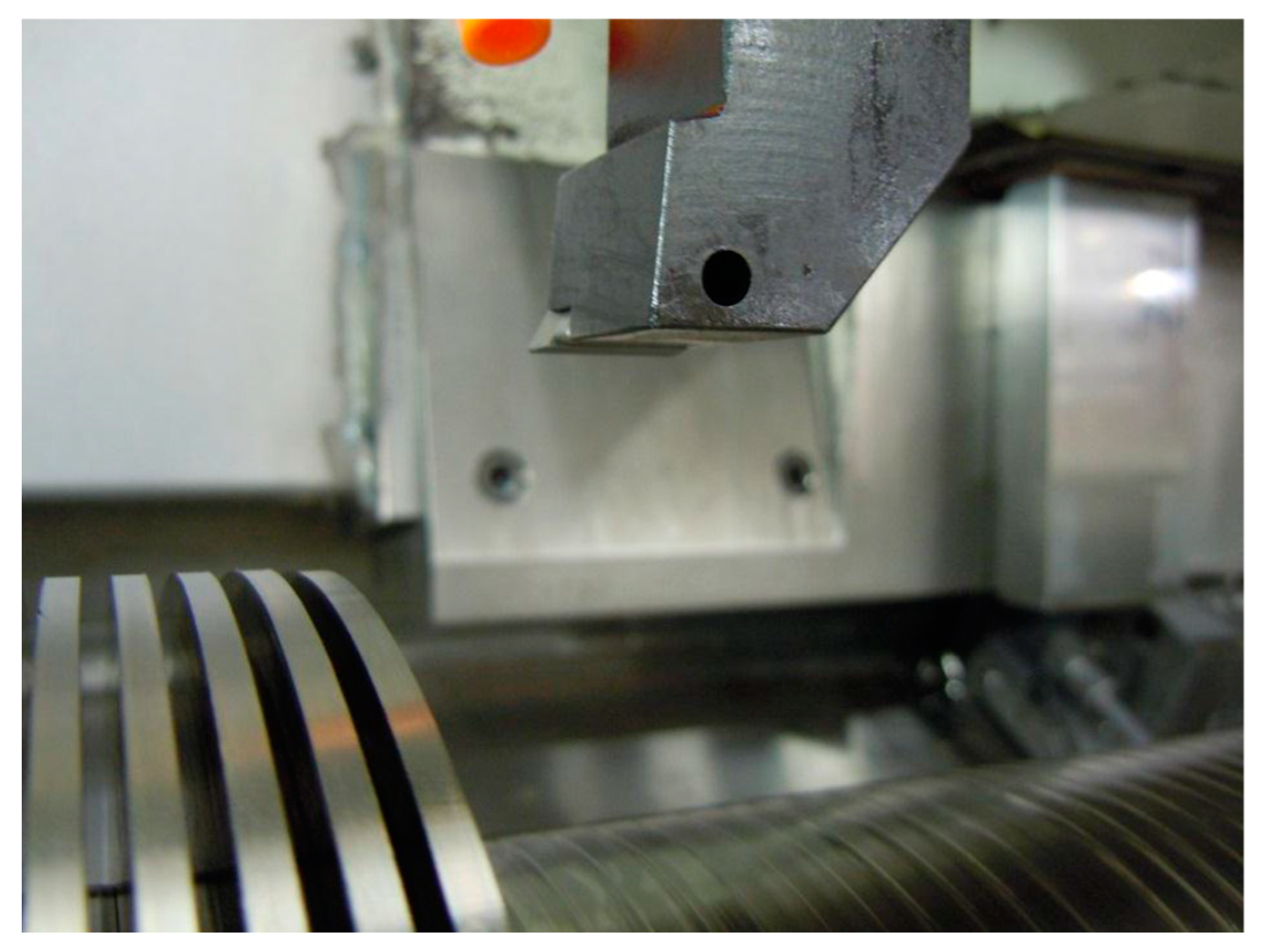
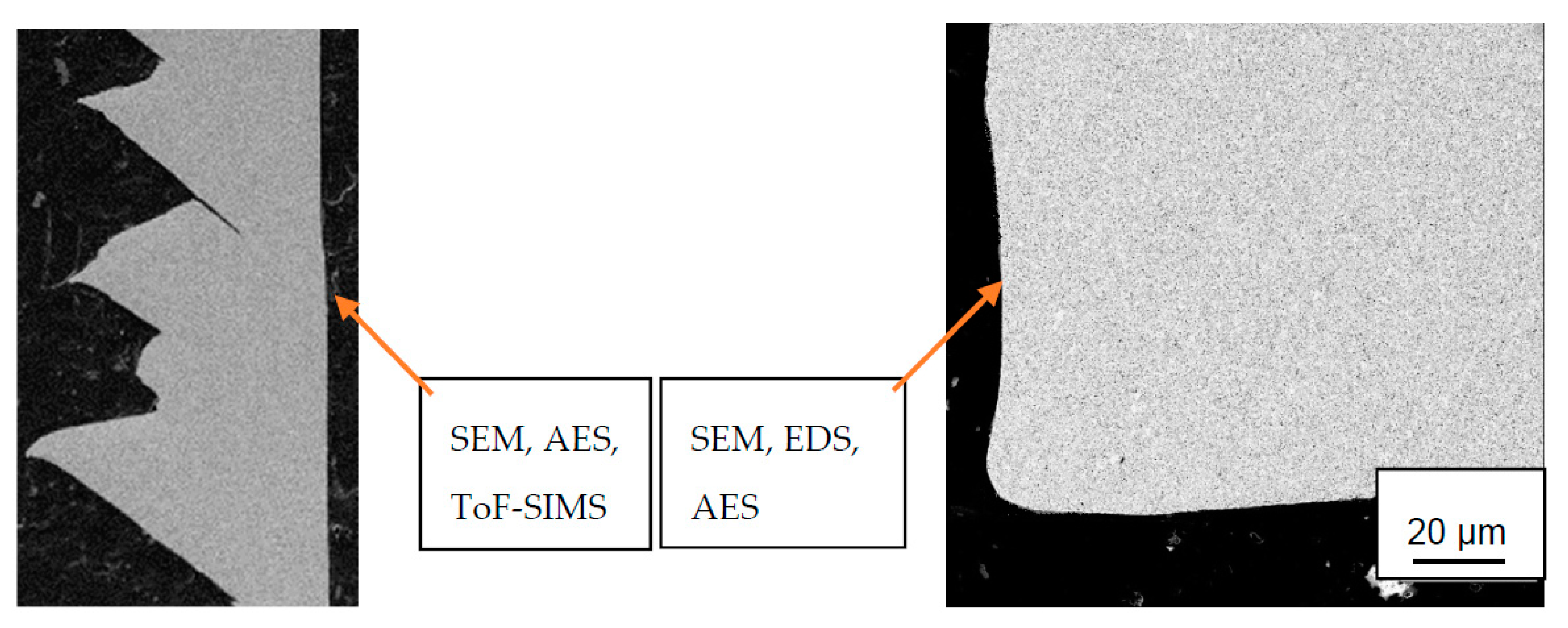
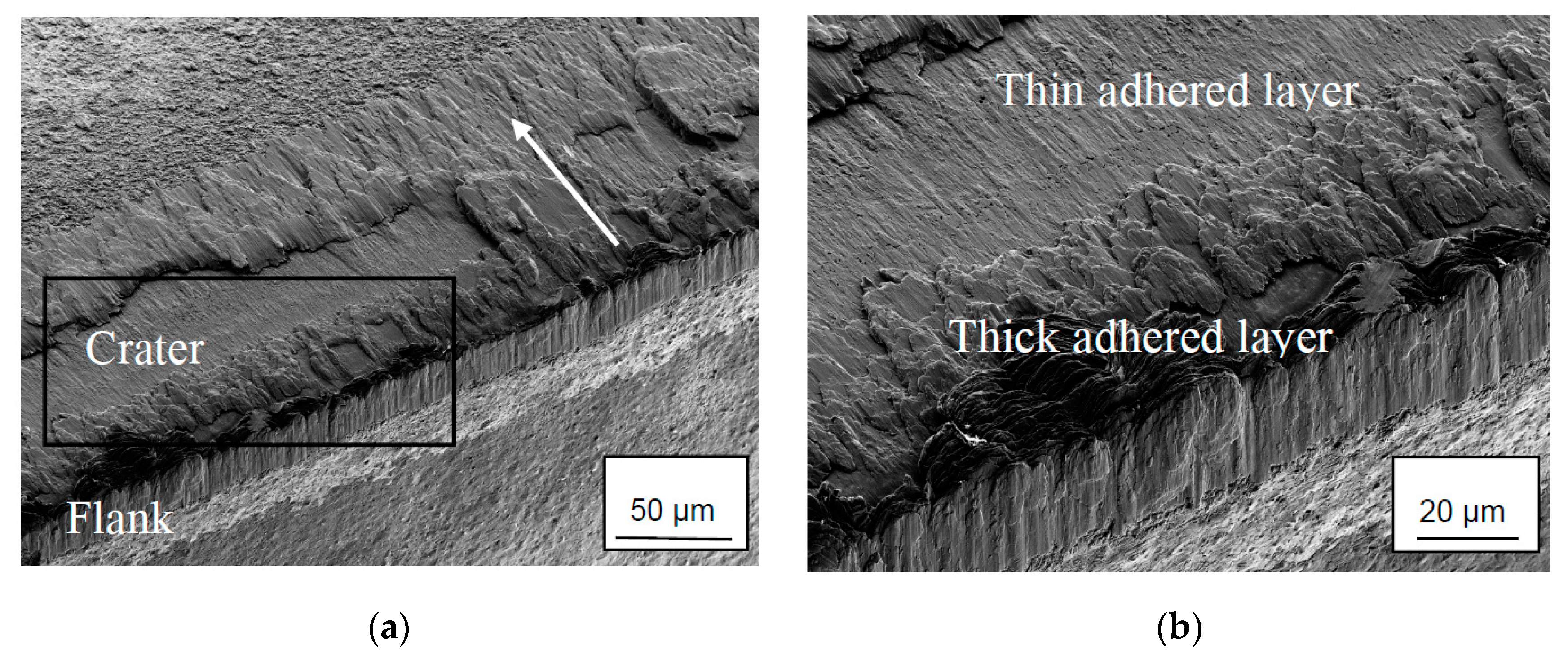
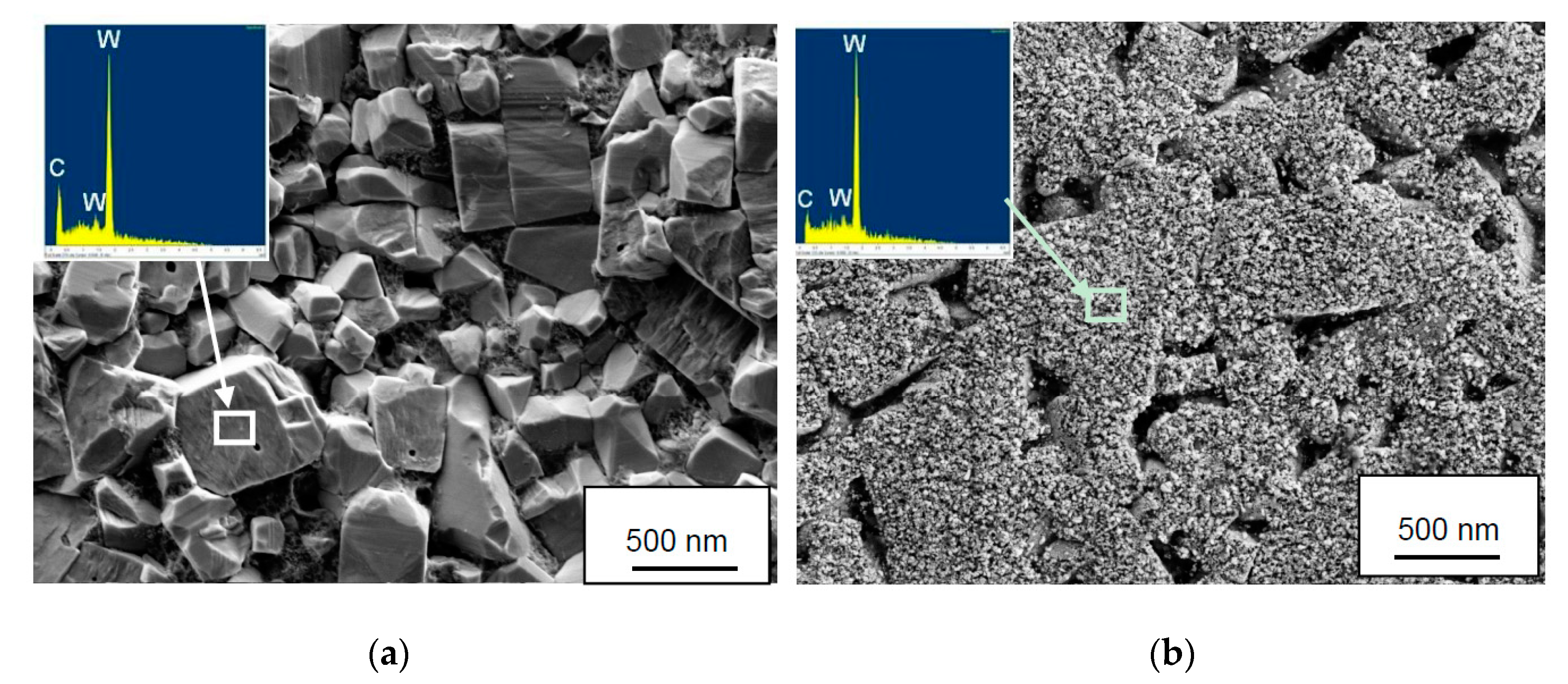
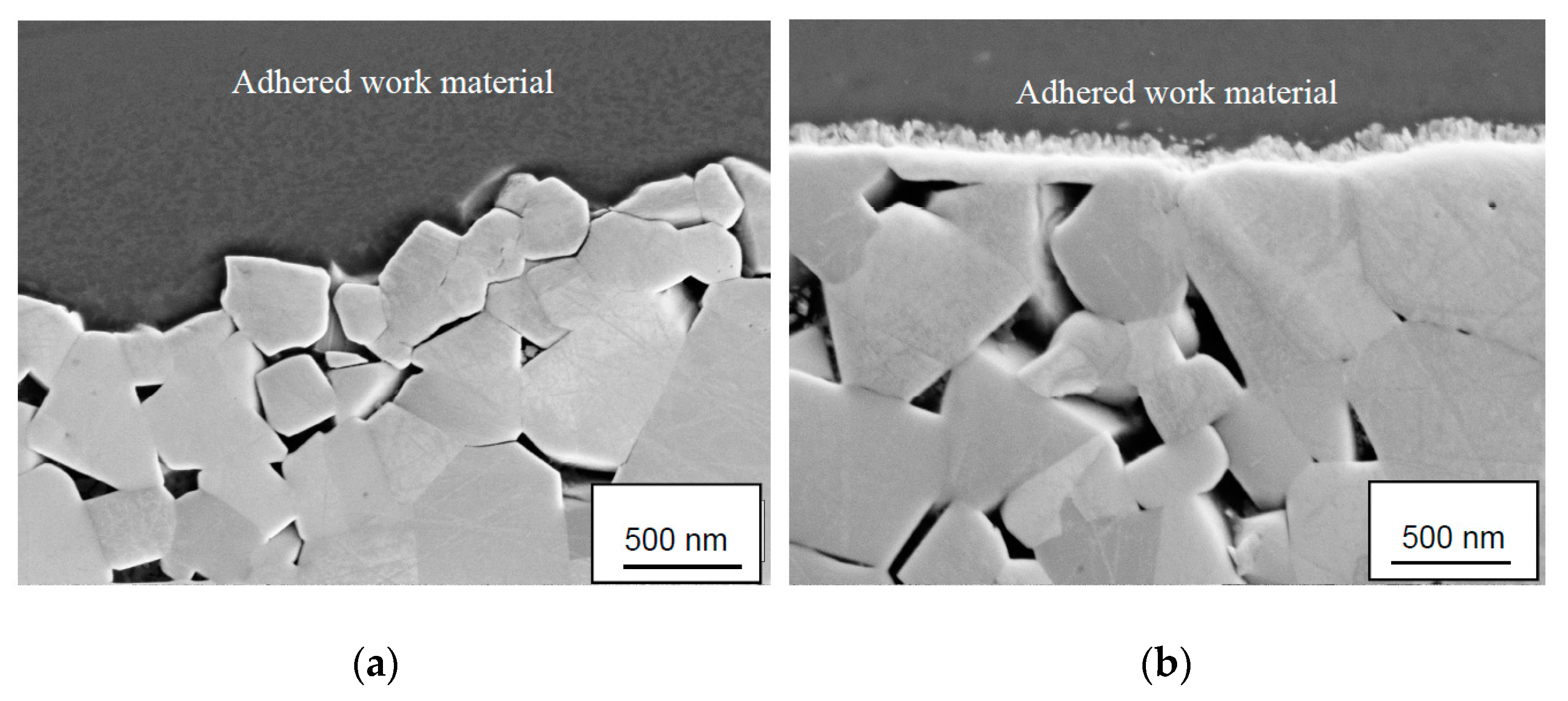
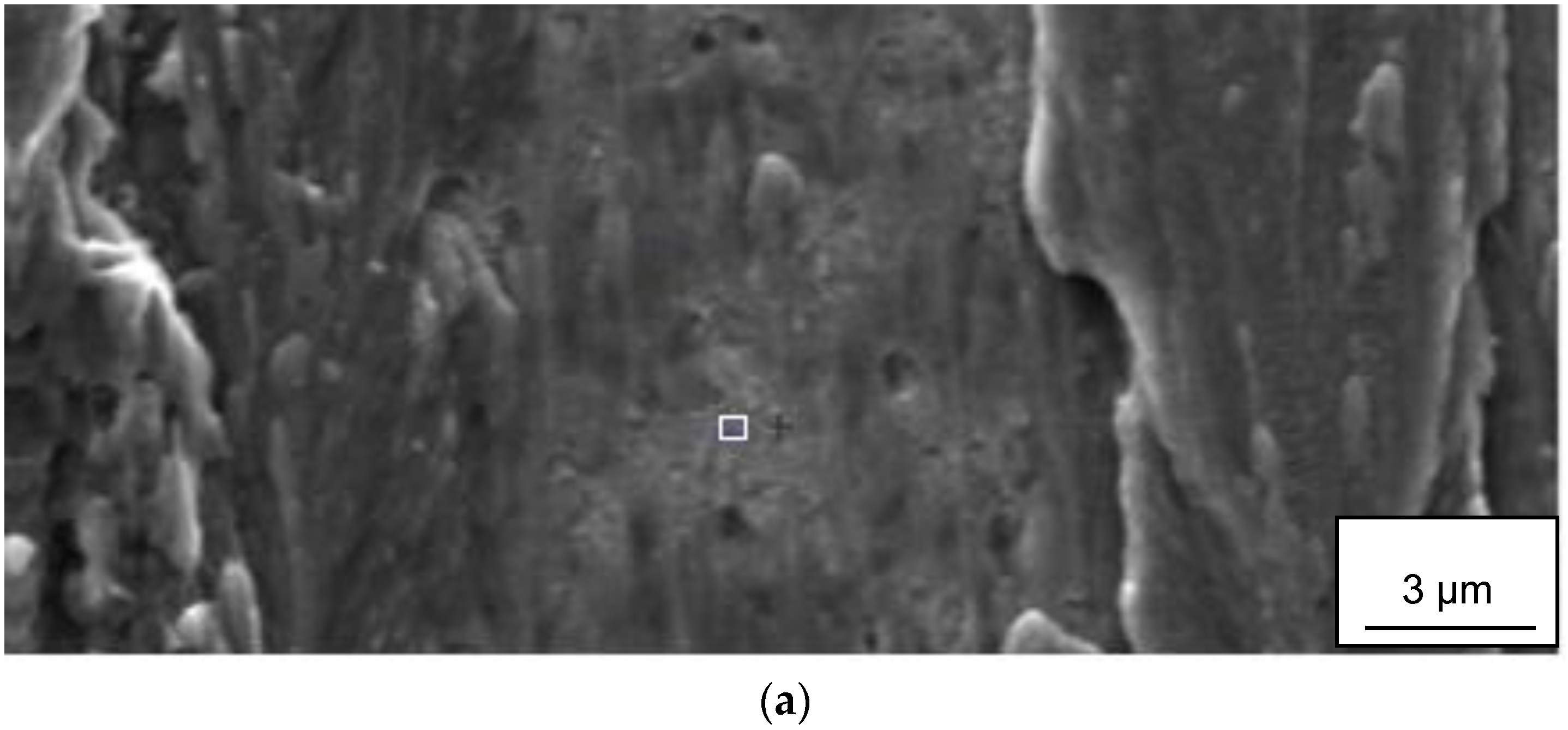
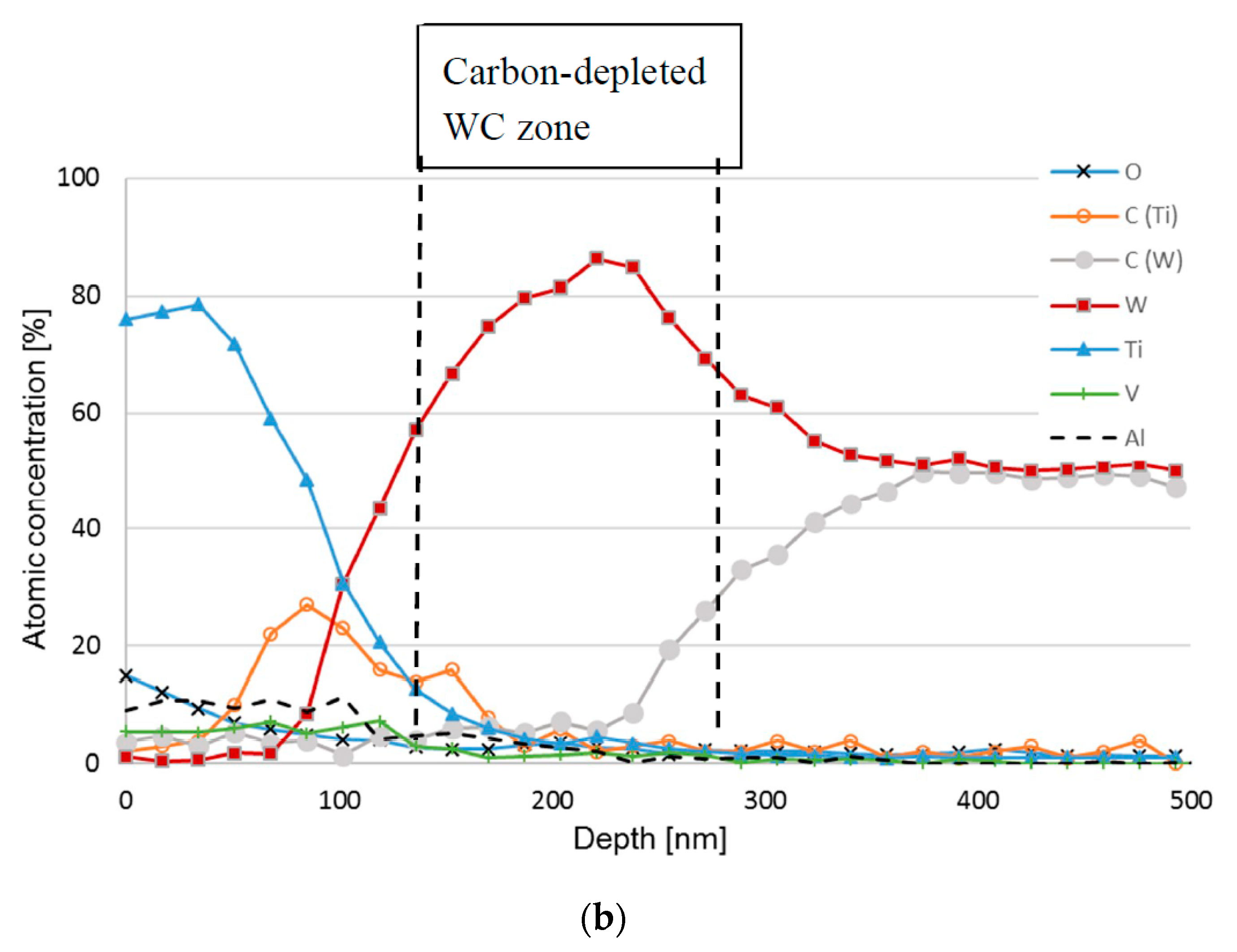
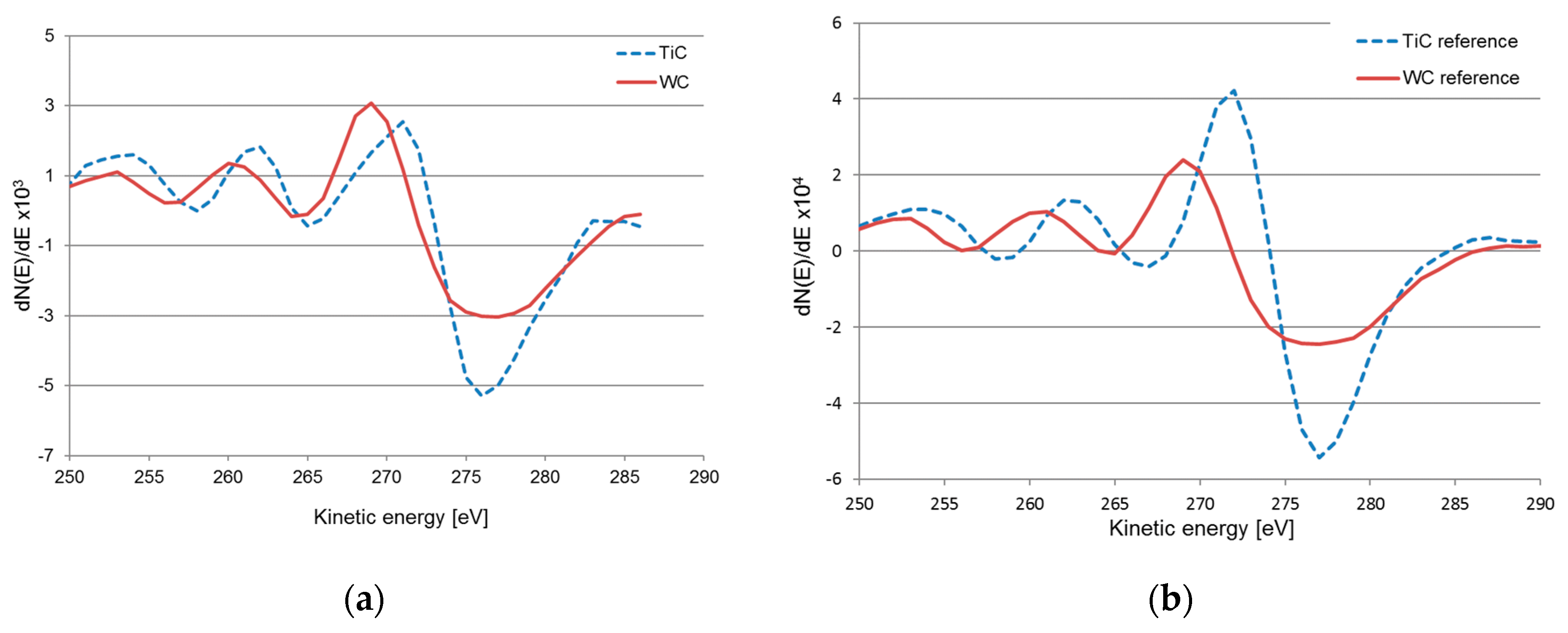
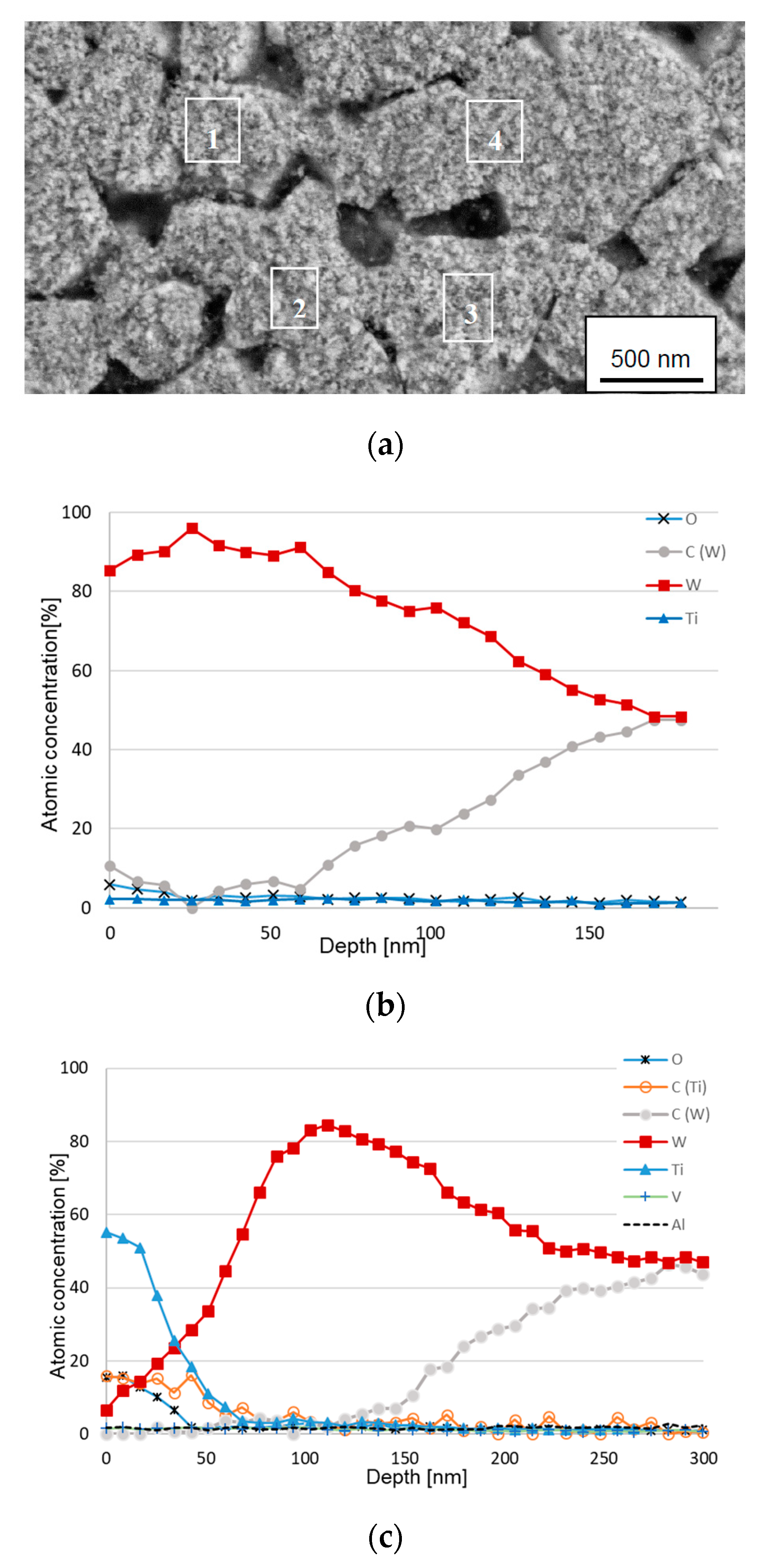
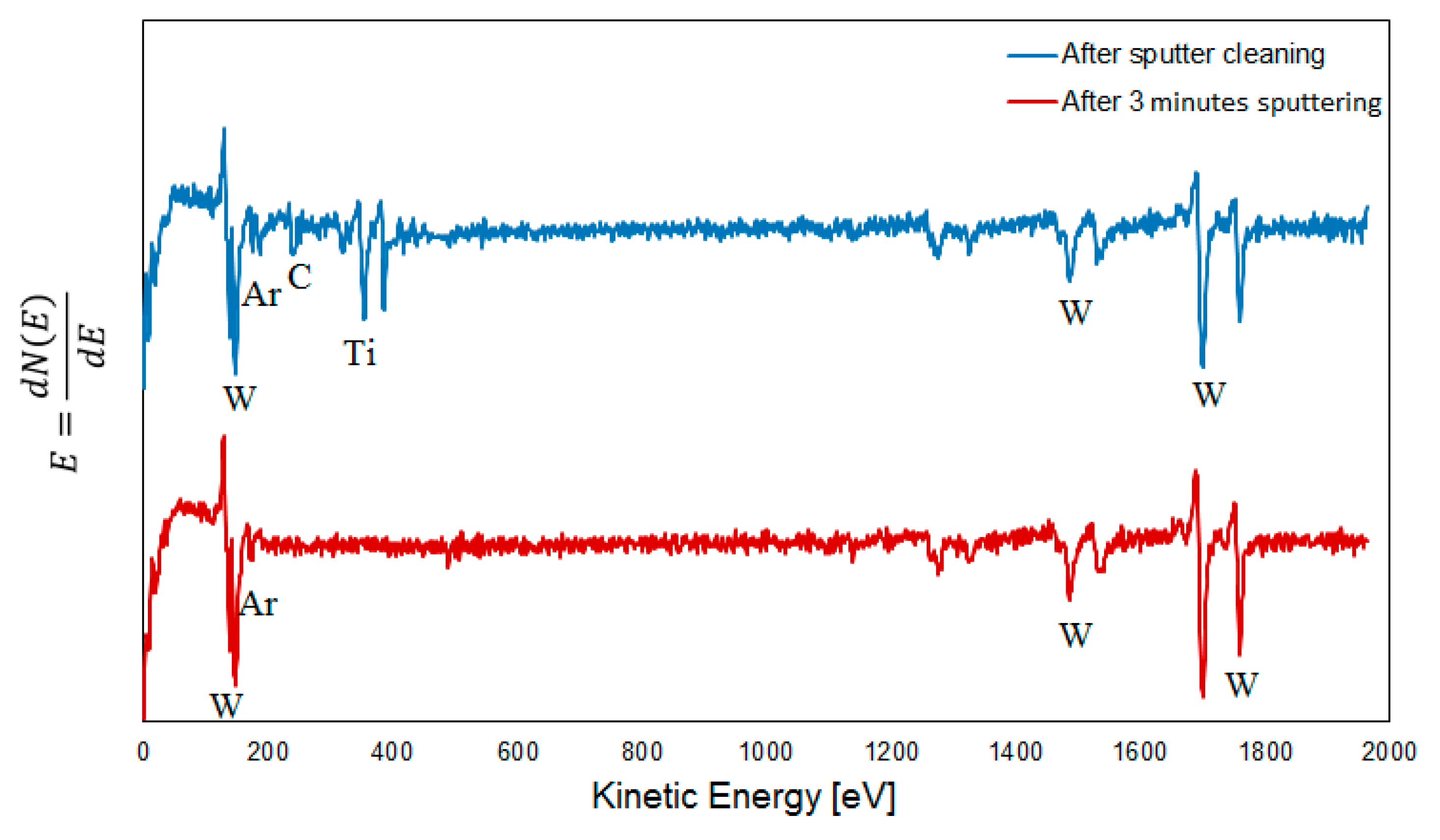
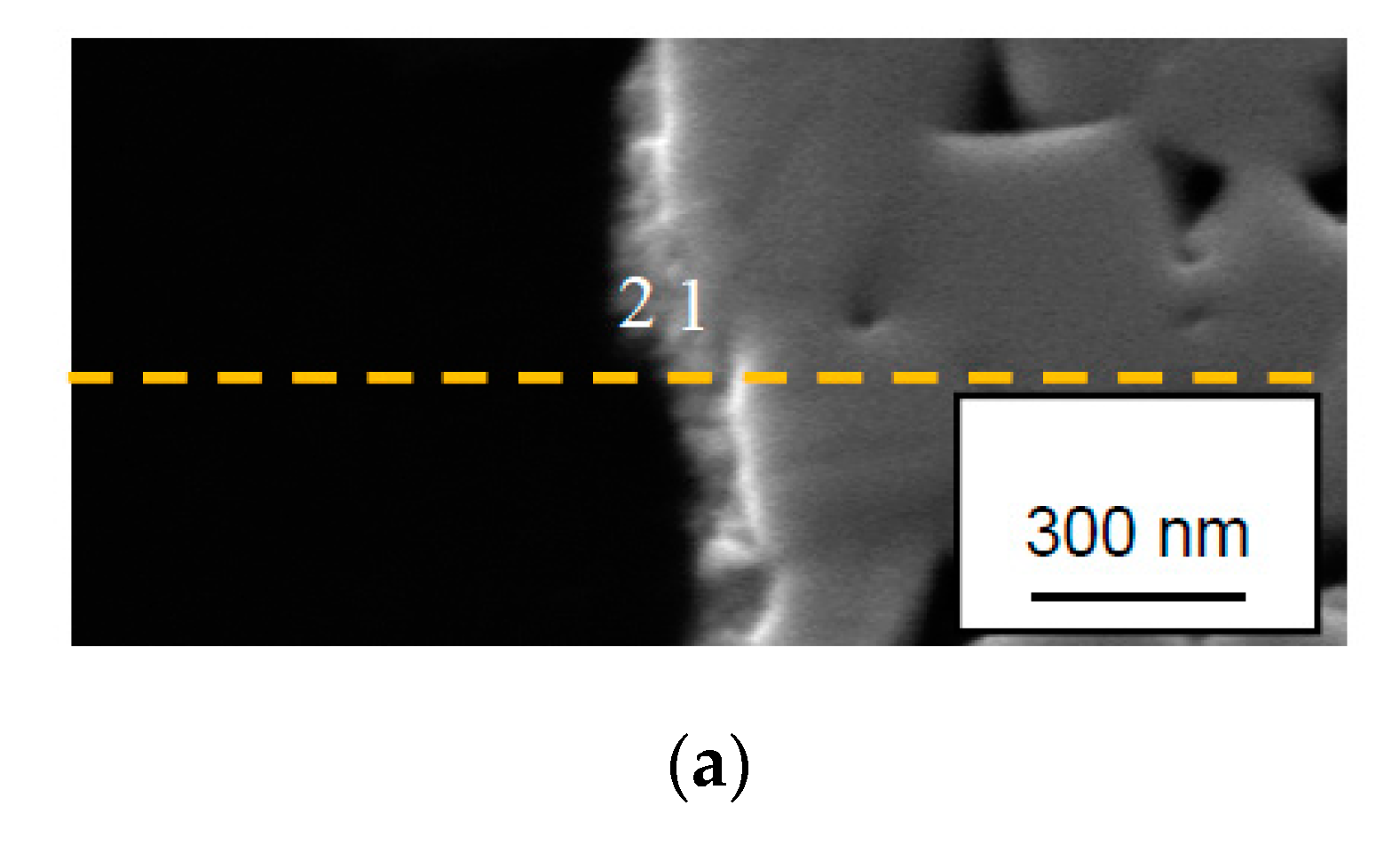

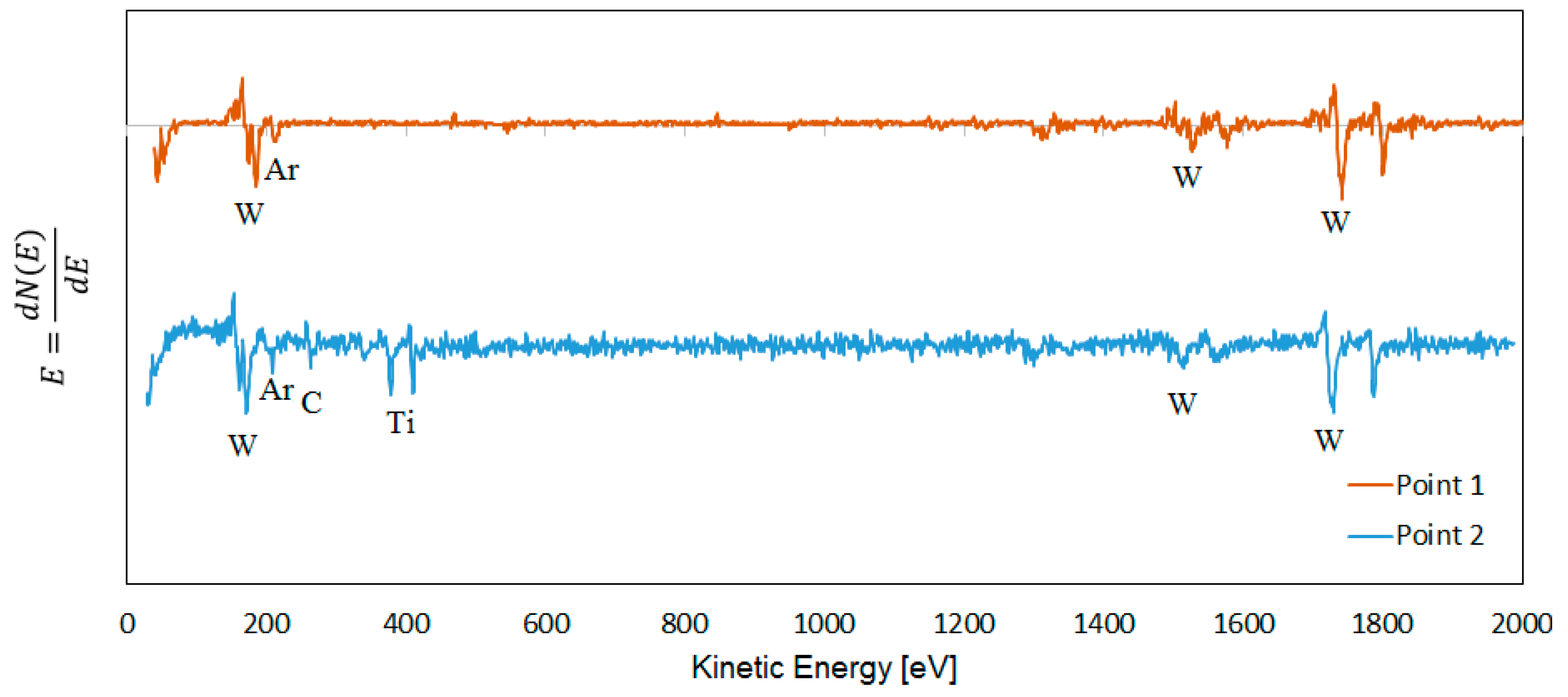
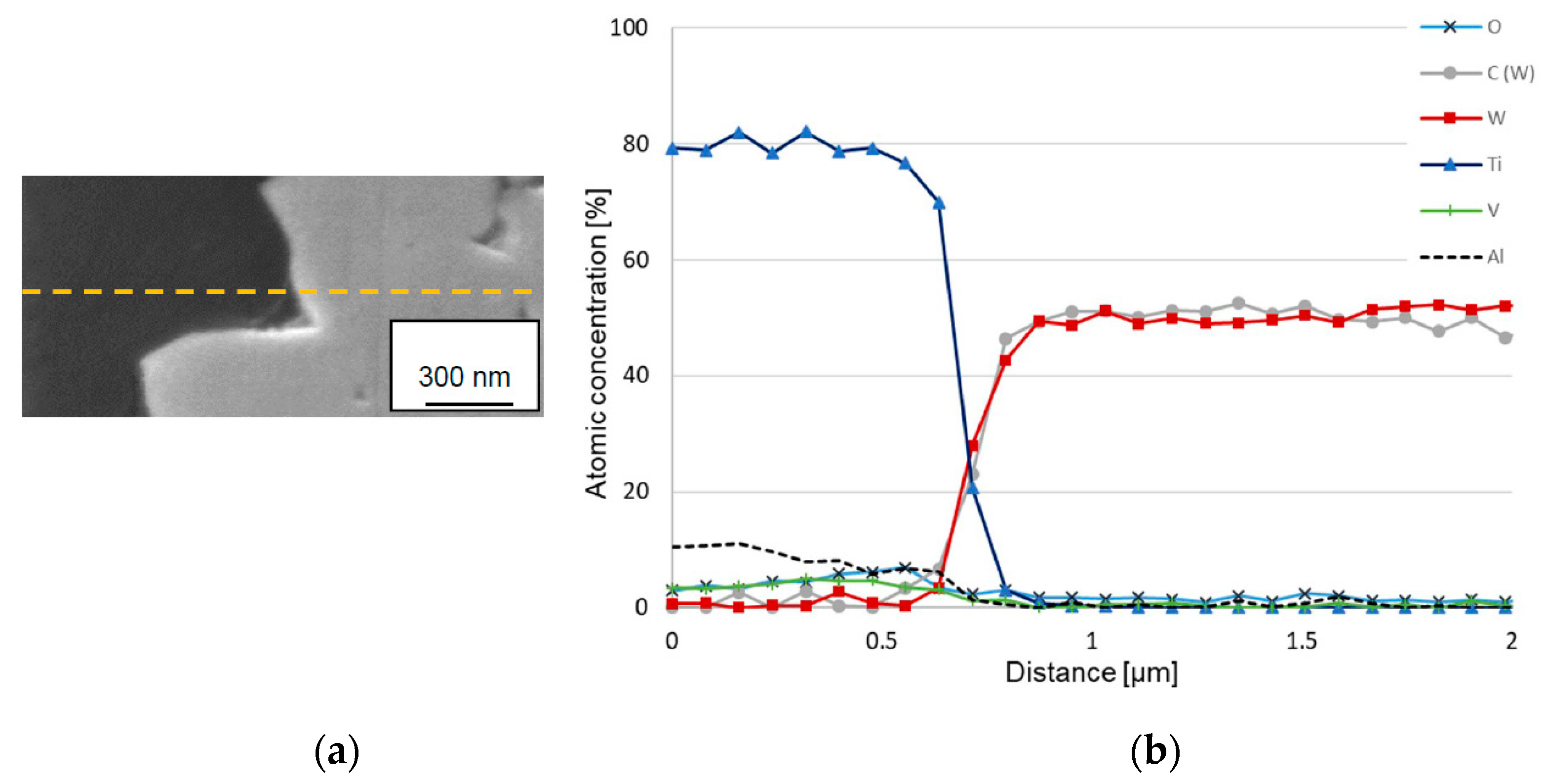
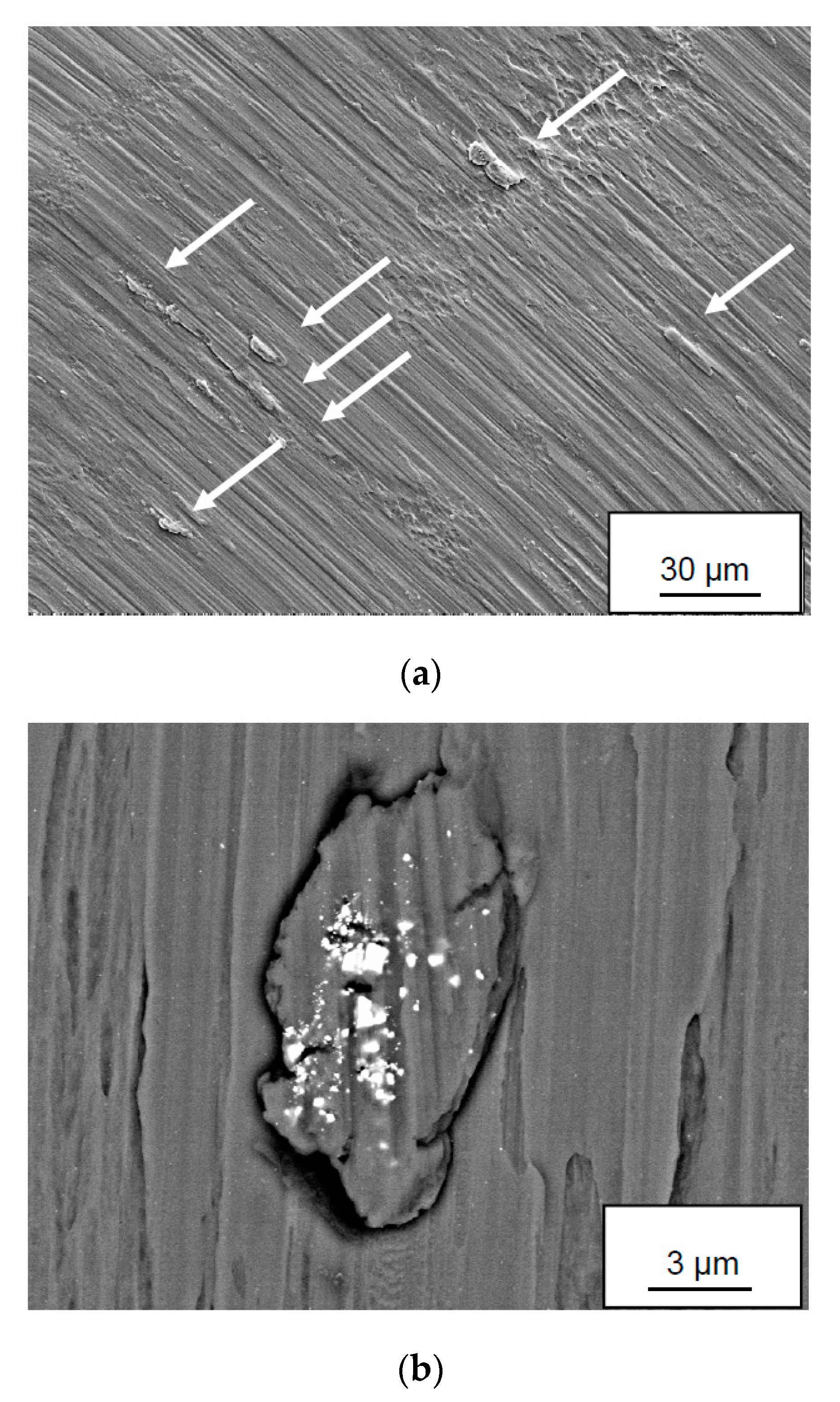
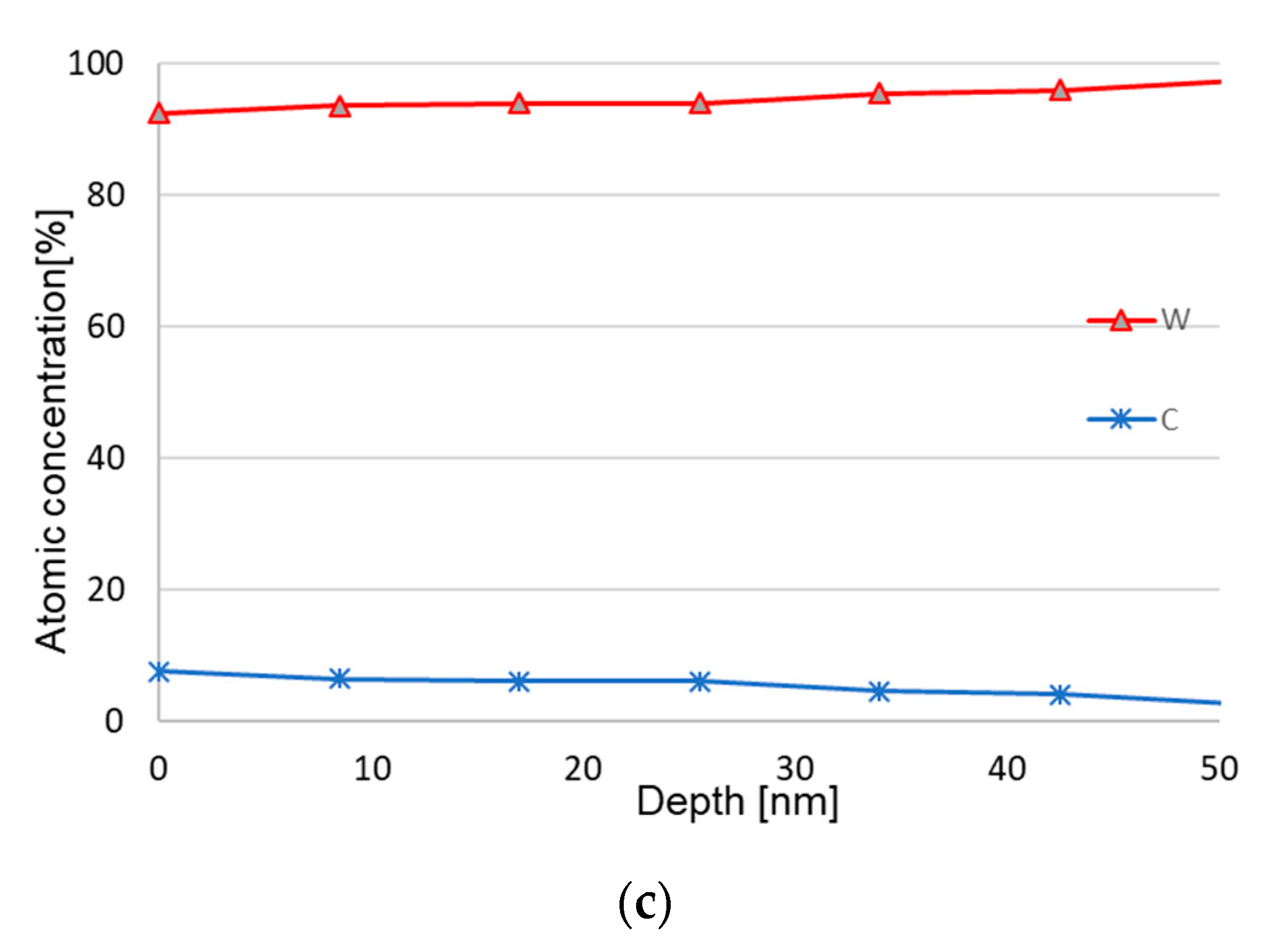

| WC [vol%] | Co [vol%] | WC Grain Size [µm] | Hardness, HV3 |
|---|---|---|---|
| 89.8 | 10.2 | 1 | 1580 |
| Al | V | Fe | C | O | N | Y | Ti | Hardness, HV5 |
|---|---|---|---|---|---|---|---|---|
| 6.425 | 3.970 | 0.155 | 0.019 | 0.190 | 0.006 | <0.001 | Bal. | 300 |
© 2019 by the authors. Licensee MDPI, Basel, Switzerland. This article is an open access article distributed under the terms and conditions of the Creative Commons Attribution (CC BY) license (http://creativecommons.org/licenses/by/4.0/).
Share and Cite
Saketi, S.; Östby, J.; Bexell, U.; Olsson, M. A Methodology to Systematically Investigate the Diffusion Degradation of Cemented Carbide during Machining of a Titanium Alloy. Materials 2019, 12, 2271. https://doi.org/10.3390/ma12142271
Saketi S, Östby J, Bexell U, Olsson M. A Methodology to Systematically Investigate the Diffusion Degradation of Cemented Carbide during Machining of a Titanium Alloy. Materials. 2019; 12(14):2271. https://doi.org/10.3390/ma12142271
Chicago/Turabian StyleSaketi, Sara, Jonas Östby, Ulf Bexell, and Mikael Olsson. 2019. "A Methodology to Systematically Investigate the Diffusion Degradation of Cemented Carbide during Machining of a Titanium Alloy" Materials 12, no. 14: 2271. https://doi.org/10.3390/ma12142271





